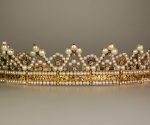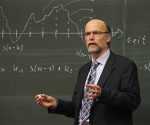First Three-Parent Baby Arrives in the World
A new technique that combines DNA from three people has been used successfully in the birth of boy who is now aged five months, according to New Scientist’s Jessica Hamzelou, and the international science community is regarding it as both a revolutionary event and a cause for more discussion.
Although controversial, this breakthrough gives parents with rare genetic mutations the ability to conceive healthy infants. But the technique has been legally approved only in the UK, though embryologists are pushing for fast approval globally. The child’s mother and father were Jordanian and were treated by a US team in Mexico.
The baby’s mother carries genes for Leigh syndrome, which affects the developing nervous system and is fatal. The disease’s genes are found in the DNA of the mitochondria, where energy for cells is provided. It also carries only 37 genes passed down to children from their mothers. However, most of a person’s DNA is located in each cell’s nucleus.
The mother, in this case, is healthy, but the Leigh syndrome she carries caused the death of her first two children. Eager to have babies, the couple found John Zhang and his colleagues at the New Hope Fertility Center in New York City.
The method used is called “pronuclear transfer” and is performed by fertilizing both the mother’s egg and the donor egg with the father’s sperm. Before the eggs start dividing into early-stage embryos, the nucleus is removed from each egg.
But this couple was Muslim and opposed destroying two embryos, so Zhang decided to try what is called a “spindle nuclear transfer.” He took the nucleus from one of the mother’s eggs and transferred it into the donor egg from which the nucleus had been removed. Then, the donor’s fertilized egg had its nucleus removed. It was discarded and the mother’s fertilized egg nucleus replaced it.
The findings will be described at the American Society for Reproductive Medicine’s Scientific Congress in Salt Lake City in October.
The remaining issue is safety. In the 1990s, mitochondrial DNA from a donor was inserted into another woman’s egg, along with her partner’s sperm. Some of the babies who were born as a result of this experiment went on to develop genetic disorders, which led to the banning of the practice. So far, however, the Muslim couple’s boy has a prognosis that is “very good.”
Fertility experts have expressed concern that the new experiment took place only because the scientists traveled to Mexico to take advantage of weak regulations in that country. And critics were more than concerned by the team’s “outrageous” and “unethical” actions just to be the world’s first to achieve this technique, reports Laura Donnelly for The Telegraph.
Dr. Zhang noted:
“It proves for the first time that genetic information from three people can avoid disease. We now know reconstitution of human eggs can produce a healthy baby. No other technique has been established.”
Zhang explained that this was just the start, and in the future, this process could be “unlimited.” He also stated that this technique could alter an unborn baby’s DNA to change its skills and appearance, writes Mia De Graaf for the Daily Mail.
Professor Simon Fishel, Founder and President of the CARE Fertility Group, and a professor of Human Reproduction, said:
“However, any first-time medical procedure moving from successful animal studies to the human, that will take several years until we understand its impact, is a necessary experimental step forward, which we hope and believe should be totally safe and utterly effective.”
Author information
The post First Three-Parent Baby Arrives in the World appeared first on Education News.









Comments are closed.